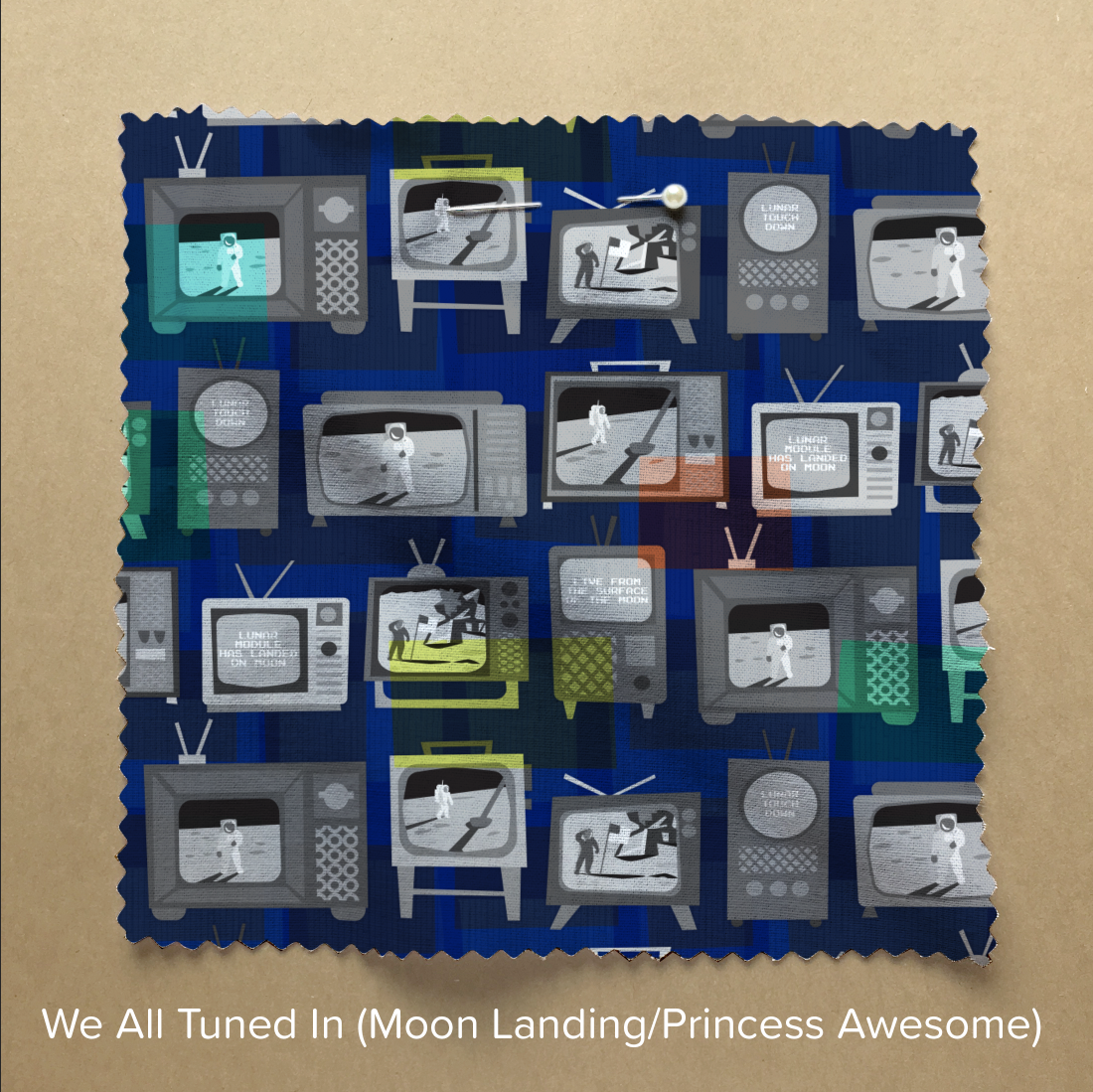Intention and Expectation: Attending the Americans for the Arts Conference
The Americans for the Arts (AFTA) conference was held in Minneapolis this weekend. It is a national conference for art administrators primarily to get together and talk about funding, sustainability, data, evaluation, and innovation and do it in a room with other people who get it. I love being an artist, but I was really good at being an arts administrator. Art is something I have to do because it is part of who I am and I can’t not do it; being an arts admin was something I was called to do by whatever little voice in your head it is that tells you that you need to do this because you can make a difference.
I left my arts admin job about 5 years ago. It was an organization that I deeply loved, a mission I believed in and a community with a lot of untapped potential. I worked way too many hours and there were some parts of the approximately 1 million cobbled together parts of my job that I was less than wonderful at, but by and large it was a good fit. I did good work and proud of the projects and connections I got to be a part of.
But something changed. There was a transition in leadership. The board of directors decided to shift the values and culture of the organization to follow a different path. It wasn’t just “things change because of new leadership and people hate change” but a bigger organizational shift that included altering the mission statement. I’ve been on enough boards of directors to know that I don’t know the whole story about why and how that came to be, but I do know that suddenly I was part of an organization that wasn’t a good fit anymore and was moving in a direction that I wasn’t really excited about. And I didn’t have a voice in that change. So I needed to leave.
I don’t talk about this much. Mostly because it has taken me a long time to process it. On my last day, I turned in my keys, walked out to my car and sobbed in the parking lot. It was emotional and complicated and I couldn’t really articulate anything except the gut feeling that I needed to move on. I still think it was the right choice. It doesn’t make it less hard.
So what does this have to do with the AFTA conference?
This conference was really designed for arts admins. Everyone asked me “who are you with?” and looked quizzically at the big blank space on my nametag where my org name would be. It made me a little nostalgic. It’s hard to be an independent artist. This conference, like many others, had a couple of afternoons of concurrent sessions. You get the agenda and read two or three sentences and try to pick which of the five different topics to go to. This is always hit-or-miss. I’m not an arts admin anymore, so I felt a little like an odd duckling. I got a scholarship to attend this conference because I wrote an essay about making more connections as an independent artist and how I thought these sessions would be valuable to me as a board member of the orgs I serve. (Thanks McKnight Foundation!) So I picked topics that I thought were a good match for those goals.
After about 5 minutes in the first session I chose, I was sure I had made a big mistake. The presenter was charismatic, but instead of diving in to her topic, she told stories about her family and she had someone from the audience sing for us. It was a presentation outside of the box and I was a little restless. I wanted things I could write down in notes. I fiddled with my tea cup. I felt irritated when the conversation veered off into something spiritual. It wasn’t what I expected.
And then I had to shake myself. I was an an arts conference. Learning about art. Which by definition is outside the box. And should make you a little uncomfortable maybe. I was so caught up in taking notes to help me write the final report for the scholarship, that I sort of forgot that I was there to talk and think about art. This session was more like a collaborative performance with the audience than a lecture and I was totally missing it.
So I took a deep breath.
And I listened.
I couldn’t write a summary of the session for you if I tried. And I only wrote down one sentence in my notes but I ended up coming away with things I am thinking about a couple of days later.
“When you come in, leave the gate open.” That’s the quote I wrote down. Her story with this quote had a different intention perhaps, but my take was this: When you start to explore something new, invite people to come along. Leave the gate open so they can follow and explore too. It’s a way to think about inclusivity in what I do. How do I leave the gate open for the next person to come in?
The second story that she shared that stuck with me was about a gallery opening where the attendees were more focused on taking selfies with the art than being with the art. She realized that the way she was talking about the work (promoting/press releases etc) was attracting a specific kind of audience with an expectation of how both the art and the viewer should interact. And that wasn’t the community or culture she was trying to build. So she stopped sending press releases. She didn’t dig in to this idea much deeper but it got me to think about the idea of not only curating your work, but curating your audience as well. Creating the culture and community that you want to be a part of. That’s something I want to think about more.
At another session, with another captivating presenter, I was 100% in the moment until he had everyone stand up and hug three other people. I understand the message he was trying to demonstrate about connections and community but there was no way I wanted to hug a bunch of complete strangers sitting around my table. (Haven’t we learned anything about touching people without their permission?) There was no way to gracefully opt out of that assignment, it was awkward and super uncomfortable, and it certainly made me feel differently about that session.
Finally, at the closing session another presenter had us write on a piece of paper and then take it and construct a paper airplane. I don’t remember what we were supposed to write or what the message of the activity was (apologies to the presenter) because I got caught up watching the other people at my table. I folded my very favorite paper airplane right away without hesitation. I do a lot of paper art, so it was easy and I didn’t even think about it. The person to my right teased me about being too eager to throw the plane. “You did that too fast,” he said. Next person around the table made a functional plane, but he had a lot of extra creases in the paper from overthinking and re-doing. The woman across from me taught a lesson to several others so they would do it the “right” way. One or two people looked puzzled like they’d never folded a plane before. One argued about the merits of folding the wings diagonally vs horizontally. One woman folded hers quickly and quietly but looked a little like she was embarrassed to admit she knew how. I was completely fascinated to see how many ways that this random group accomplished the same basic task and their reactions to it.
What do all of these experiences have in common? I think it was all about intention and expectation.
First was a mismatch between the presenter’s intention for her session and my expectation about what it was going to be. I could have left the session being irritated and grumpy that it wasn’t what I wanted it to be, but I chose to change my expectation.
Next was about realizing that when you do things in an expected way (traditional press release) you will probably get an expected outcome (traditional attendees). If your intention is to change the way something works, you have to change the way you talk about it.
Third was an intention by the presenter to break down a barrier and make people feel included. However, the intention completely backfired by making me (and others) feel uncomfortable and dreading the expectation of more unwelcome interaction. (spoiler alert, he had us tell each other “I love you”.)
Finally, the intended message of the closing exercise ended up having a completely different meaning for me based on my own take on the process involved.
As an artist, these are awesome things to think about:
- Will the participant/viewer understand what I am intending with this piece or process? How can I help them know what to expect ahead of time?
- Am I communicating the outcome I want to have happen after they’ve seen/interacted with this piece?
- Are the ways that I am creating or teaching putting up barriers for someone to interact with the work?
- Am I open to the other ways that my work can be interpreted and what can I learn from that?
Although this was an arts conference, we didn’t talk very much about art. We talked about strategic planning and troublesome board members, HR issues and theories of change, data and consulting firms. But my takeaways from the sessions and the things I am thinking about the next week don’t have anything to do with the topics of those sessions.
It did what great art does: It made me think. I had a reaction. A mismatch of both expectation and intention, maybe, but an experience I took something away from nonetheless.





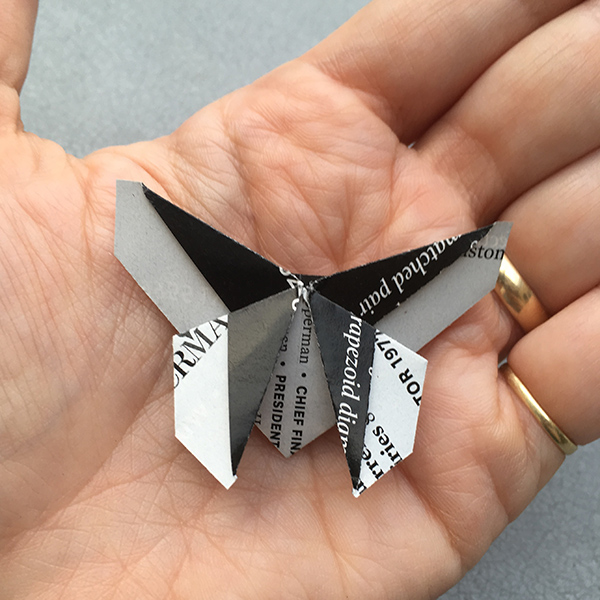
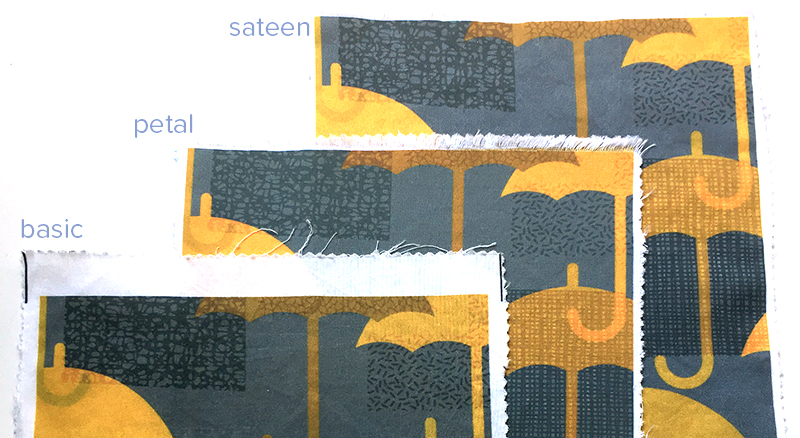
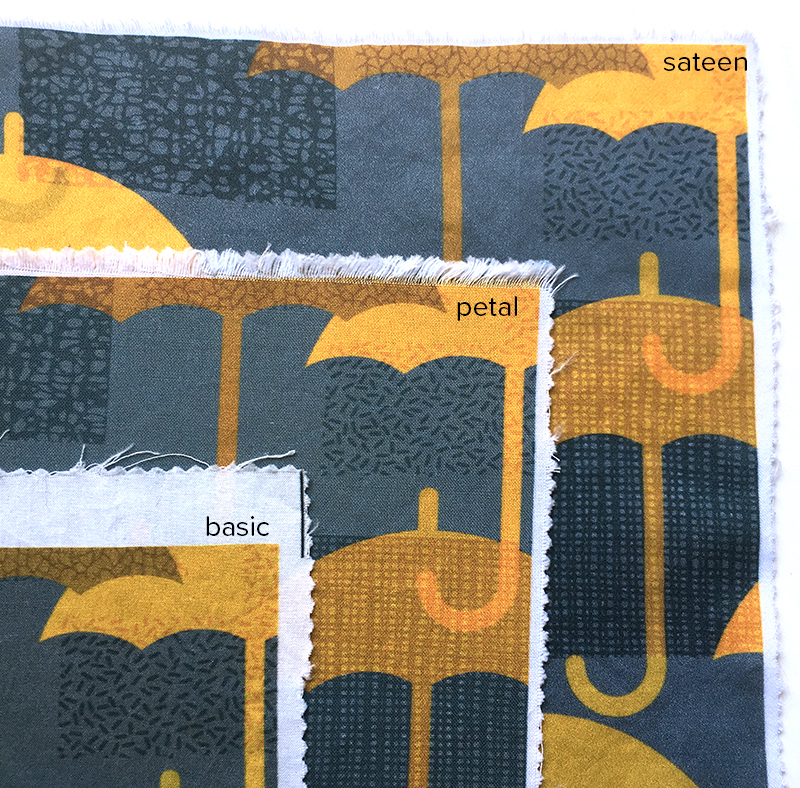
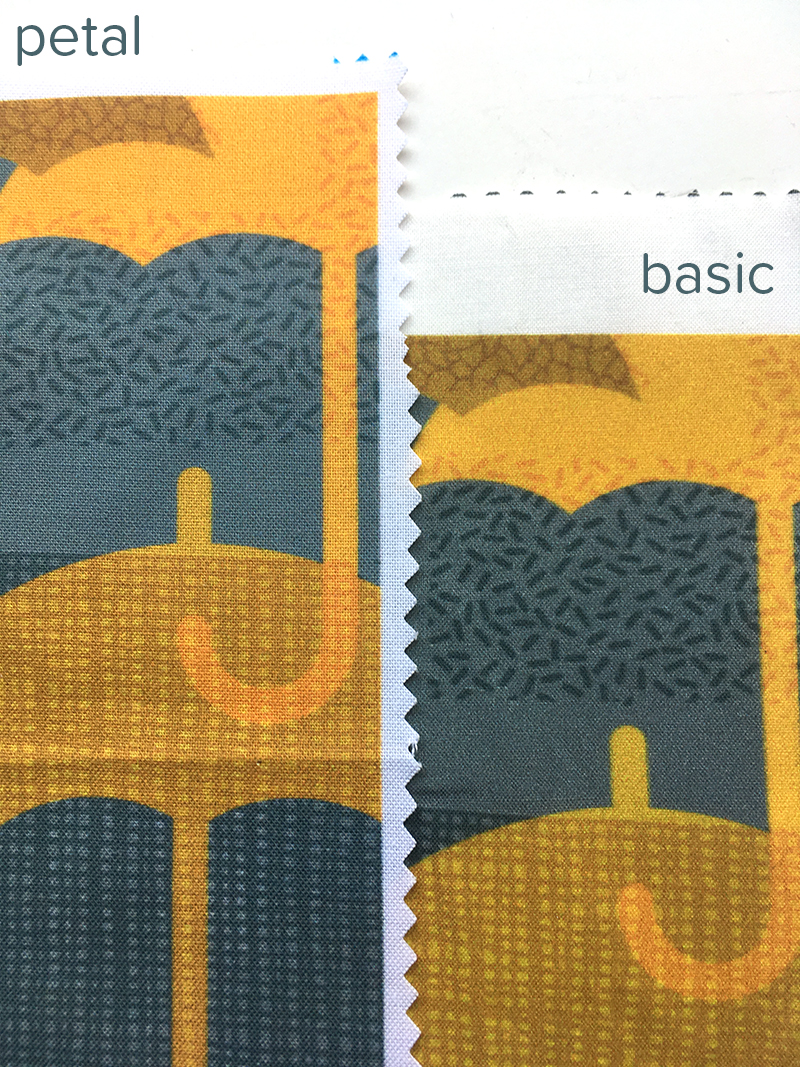
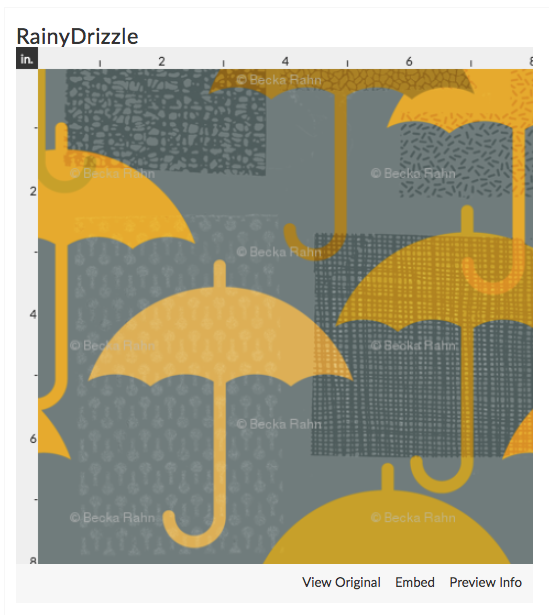 When I ordered my test swatch of Petal Cotton, I chose the same design I had just printed a few weeks before on the Basic Cotton. This
When I ordered my test swatch of Petal Cotton, I chose the same design I had just printed a few weeks before on the Basic Cotton. This 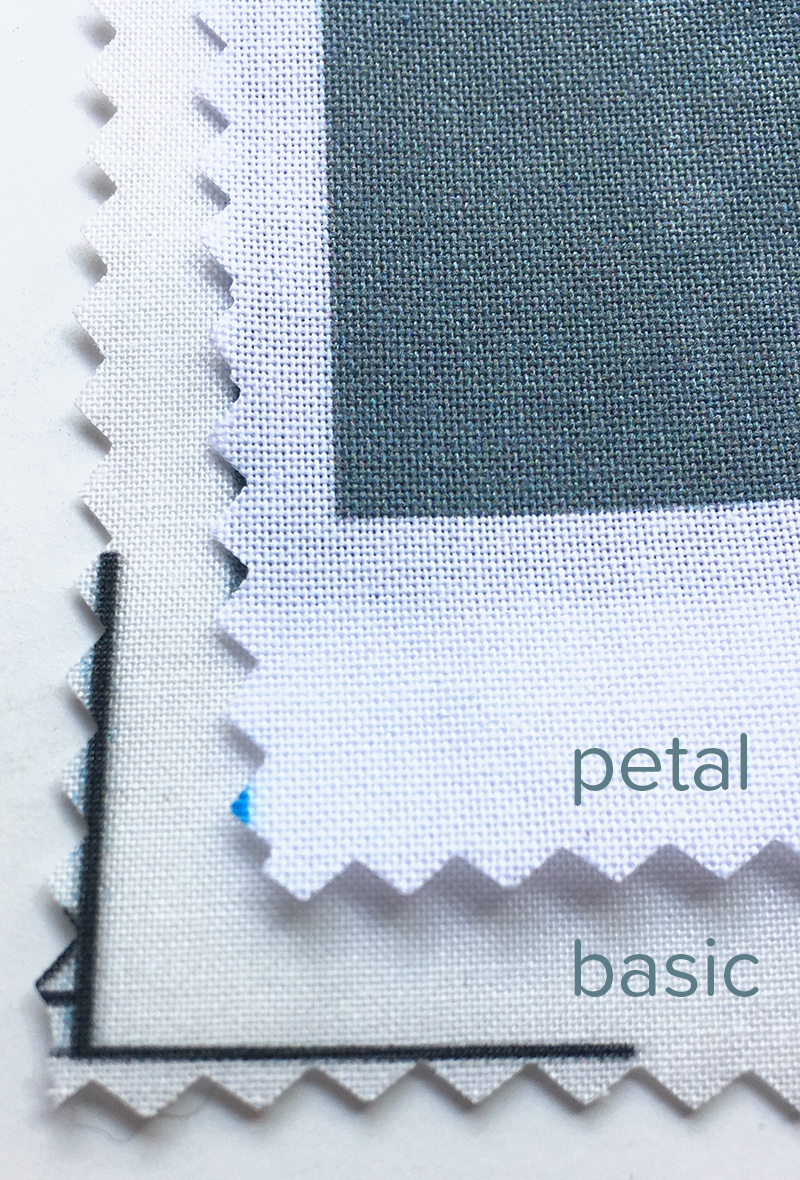
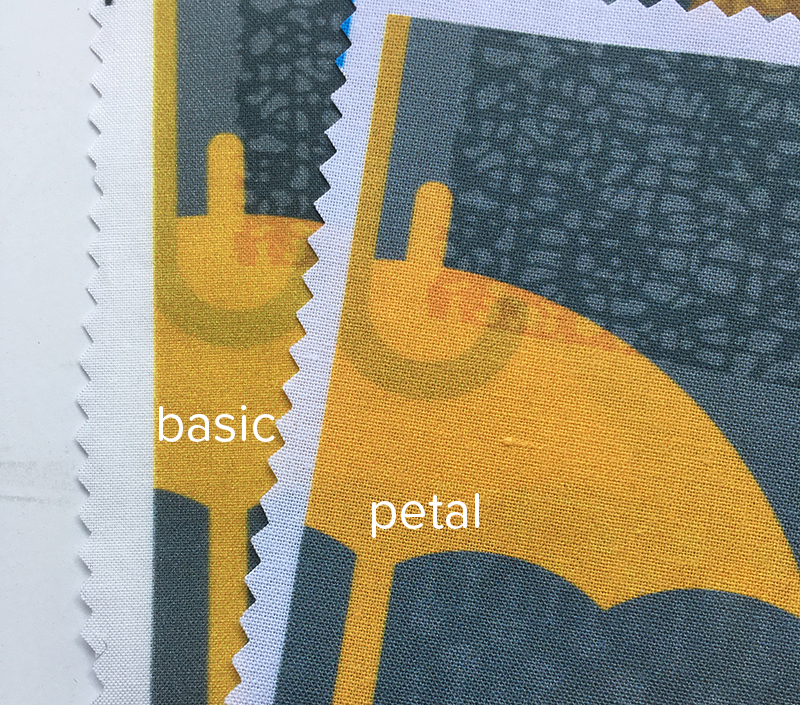

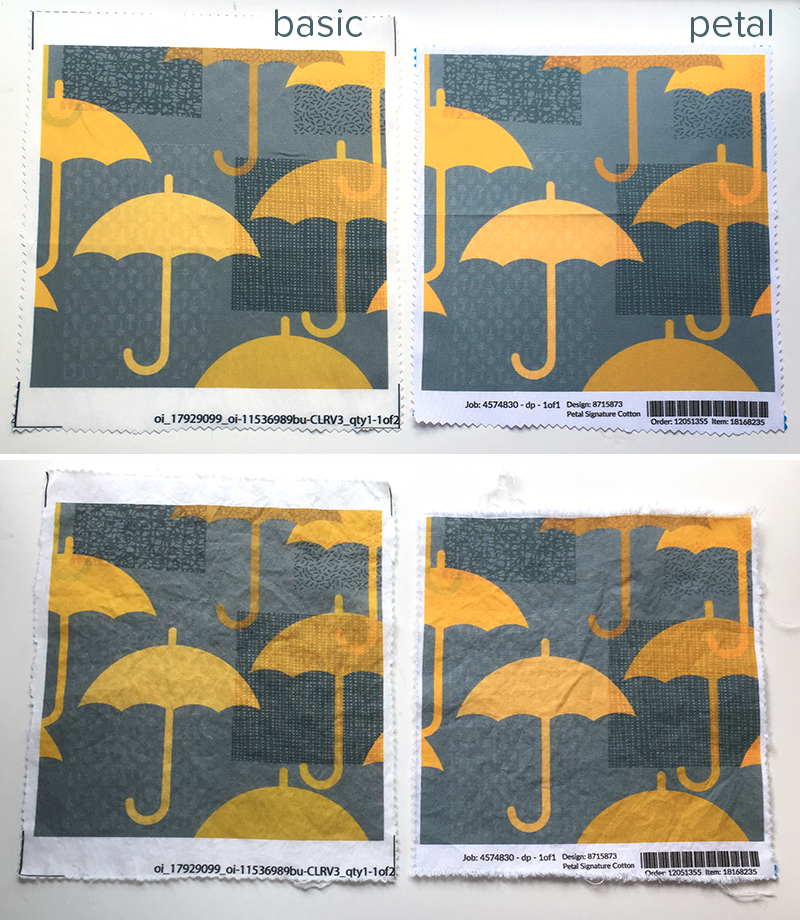
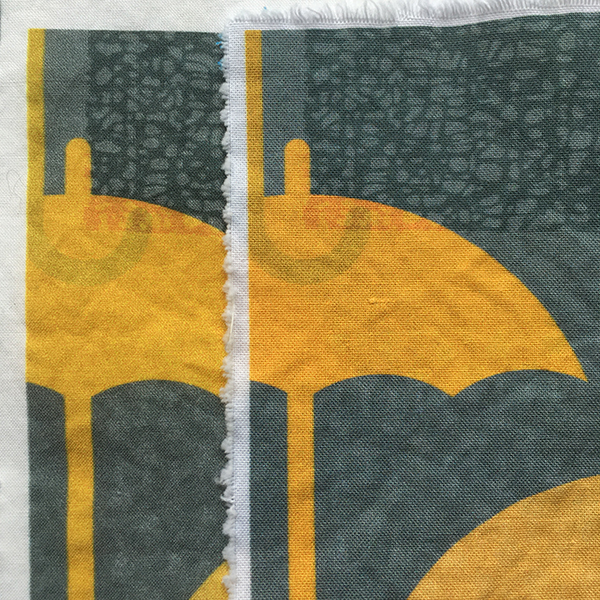
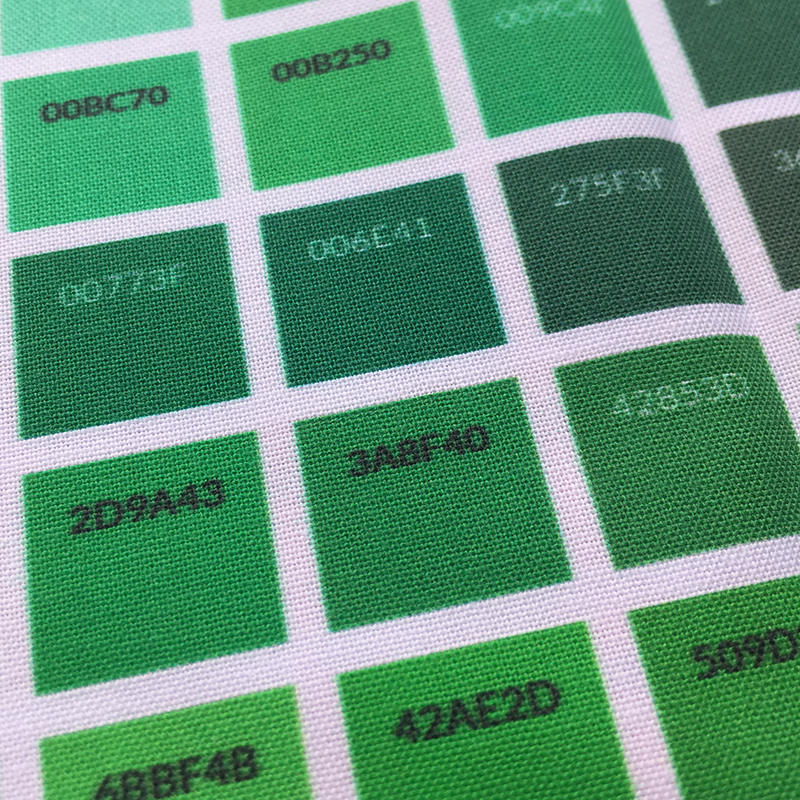
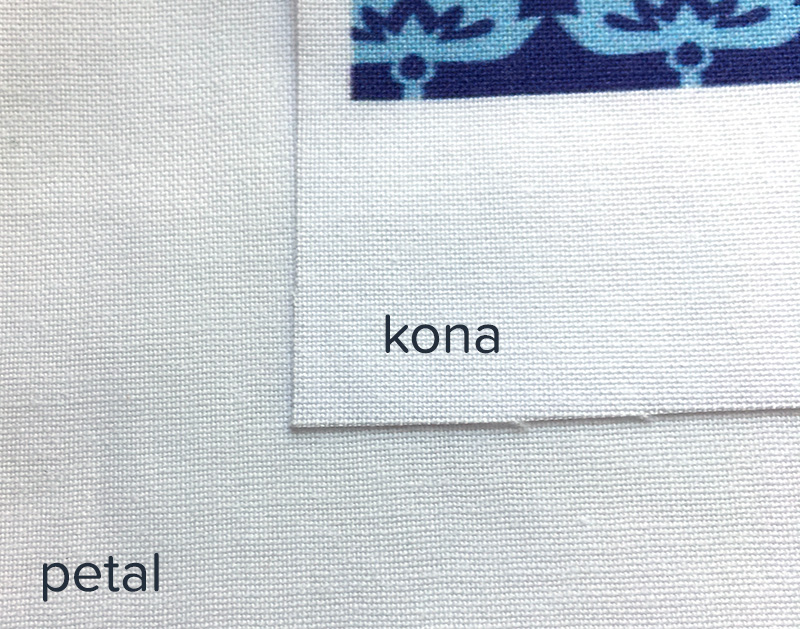

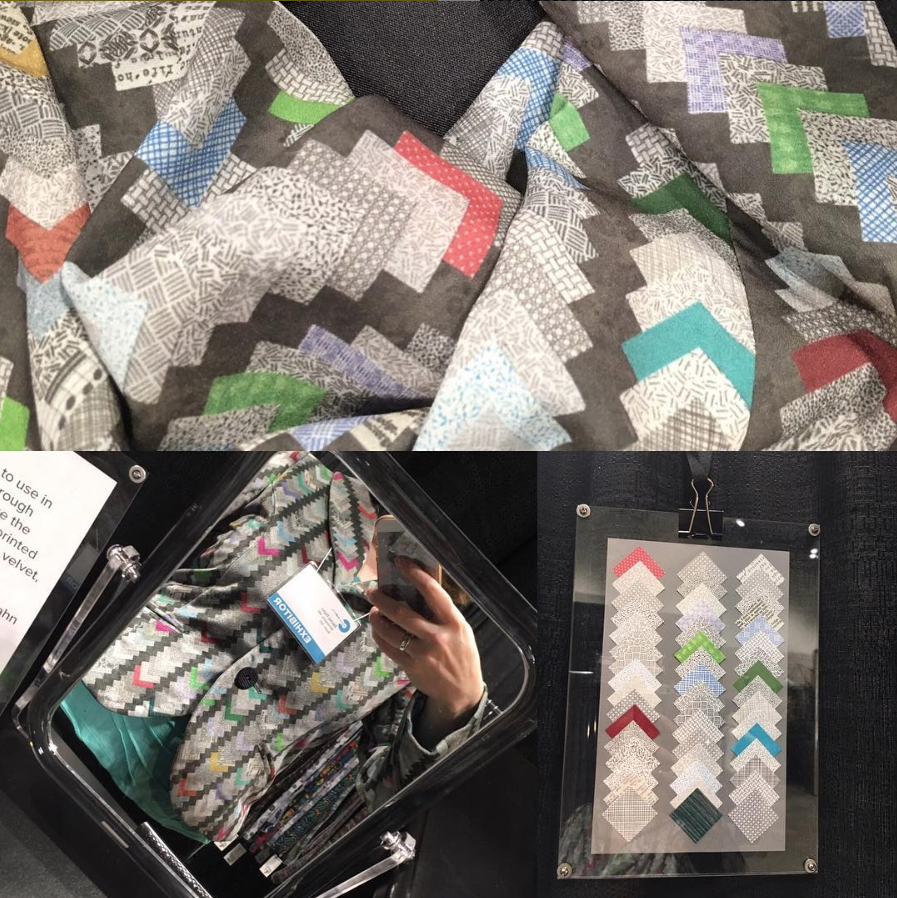
 I started with their Hip Pop emerging artists program. That’s an image of my 2017 booth in its cardboard glory. (I actually think the cardboard popups are awesome and I think my work really popped against that kraft paper color.) Hip Pop is also a juried program but allows artists to share a booth with other emerging artists. The booth fees are lower (because of the limited space) and some of the display/lighting is included, so it is a way for new artists to try out the show and see if the audience is a good fit for their work before investing in a full both space. Once you have juried in as a Hip Pop artist, you can return to the shared booth for 3 years and then “graduate” to a full sized booth for the next two. I just completed my fifth year, so next year I will need to re-jury into the regular artist pool.
I started with their Hip Pop emerging artists program. That’s an image of my 2017 booth in its cardboard glory. (I actually think the cardboard popups are awesome and I think my work really popped against that kraft paper color.) Hip Pop is also a juried program but allows artists to share a booth with other emerging artists. The booth fees are lower (because of the limited space) and some of the display/lighting is included, so it is a way for new artists to try out the show and see if the audience is a good fit for their work before investing in a full both space. Once you have juried in as a Hip Pop artist, you can return to the shared booth for 3 years and then “graduate” to a full sized booth for the next two. I just completed my fifth year, so next year I will need to re-jury into the regular artist pool.




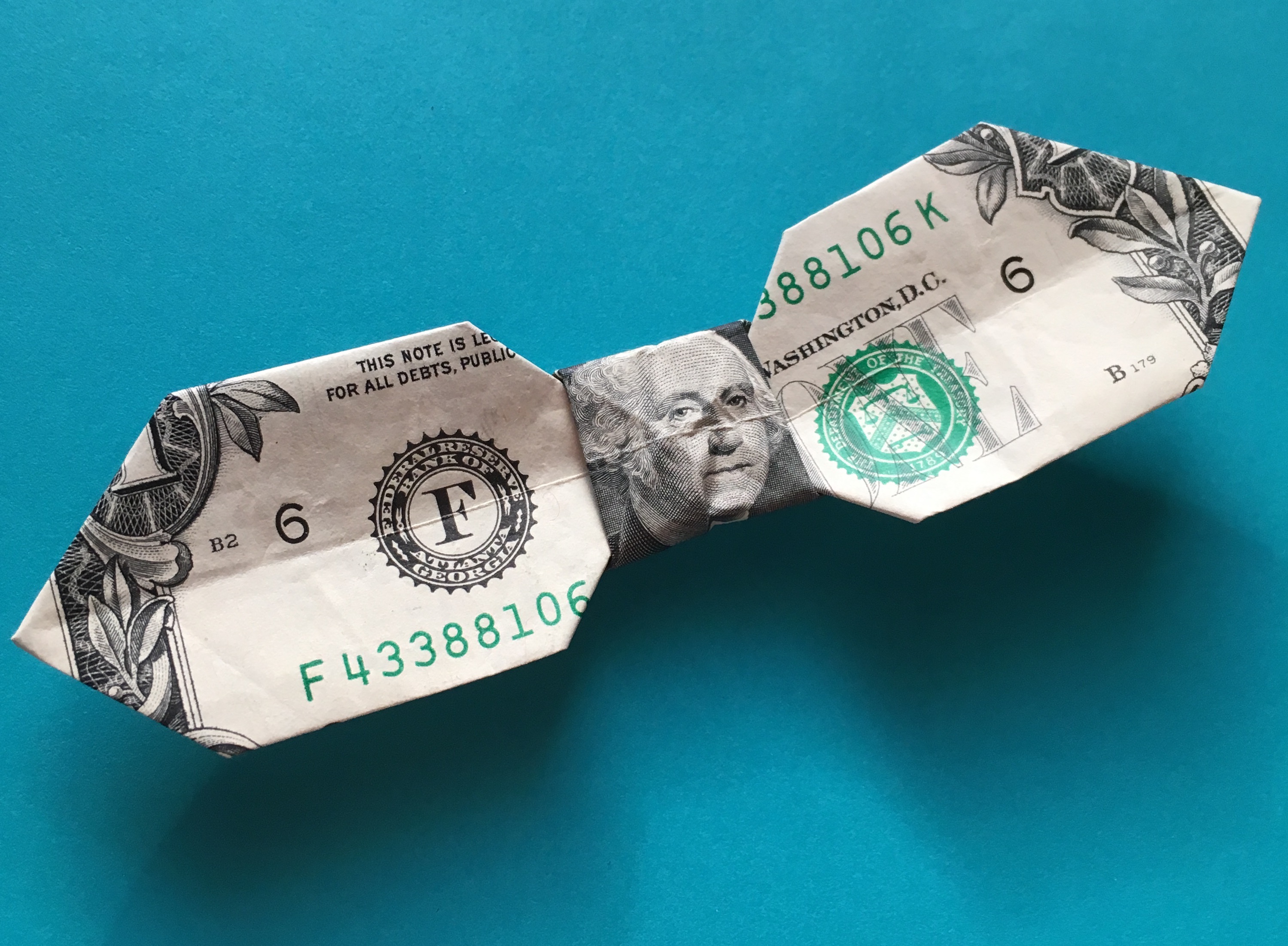


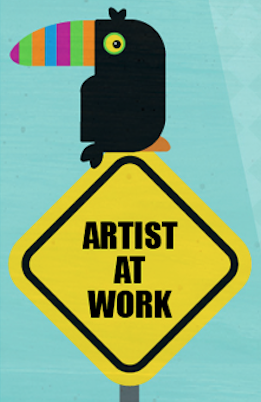 And this goes right along with my philosophy when I am teaching, too. I primarily teach fabric design, which has some technology that is required to be able to participate. I have always tried to offer levels of participation when I put together classes for hosting organizations to choose from: a “Photoshop version” and a “free and cheap online software” version. When I first started, there was definitely a bias towards “We must use Photoshop because that is what the professionals use”. But lately, the only version that organizations have been choosing for me to teach is “free and cheap”, which has huge advantages and disadvantages. Photoshop and its siblings are expensive. Absolutely. So using things like PicMonkey and RepperPatterns (two apps I use a lot) brings that cost down a lot for students and does make it more accessible in some ways. But the trade off is that PicMonkey is not Photoshop. I can *almost* do all of the same things in both programs; I’ve worked hard to figure that out. But only *almost*. The way you do it in PicMonkey might involve a few more steps and a little ear-nose-elbow kind of manipulation to get you there and there are some things you just can’t do. Which students find really frustrating and they let me know that.
And this goes right along with my philosophy when I am teaching, too. I primarily teach fabric design, which has some technology that is required to be able to participate. I have always tried to offer levels of participation when I put together classes for hosting organizations to choose from: a “Photoshop version” and a “free and cheap online software” version. When I first started, there was definitely a bias towards “We must use Photoshop because that is what the professionals use”. But lately, the only version that organizations have been choosing for me to teach is “free and cheap”, which has huge advantages and disadvantages. Photoshop and its siblings are expensive. Absolutely. So using things like PicMonkey and RepperPatterns (two apps I use a lot) brings that cost down a lot for students and does make it more accessible in some ways. But the trade off is that PicMonkey is not Photoshop. I can *almost* do all of the same things in both programs; I’ve worked hard to figure that out. But only *almost*. The way you do it in PicMonkey might involve a few more steps and a little ear-nose-elbow kind of manipulation to get you there and there are some things you just can’t do. Which students find really frustrating and they let me know that.